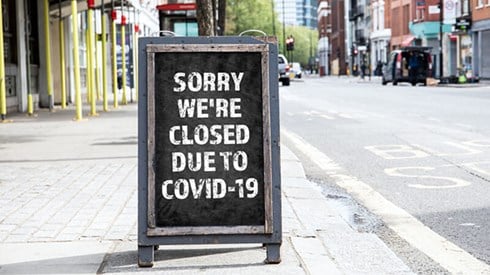Year in Review: Looking Back on an Unforgettable Year

December 14, 2020

I don't think in my 25 years with Captive.com, I have written a year-in-review piece where so many people will be happy to see the year end. While it may seem like hyperbole to say most of us have never experienced a year like 2020, I think most people would agree. For those of us in the insurance industry and particularly captive insurance, what does it mean, and where are we headed from here?
I'll start with two recent articles that are worth reading. The first is a Best's Special Report titled "First Look: 9-Month 2020 Property/Casualty Financial Results," from A.M. Best. It looks at the financial results for the property-casualty industry for the 9 months ending September 30, 2020. (The report can be accessed from the A.M. Best website with registration.)
As a director for an insurance company, one way of looking at how your company has fared during this past year is to compare your results against the industry. While captives are a niche market of the overall industry, it can be informative to do the same thing for your captive. How did your results stack up when compared against the industry as a whole? Basically, calculate the percentages for your 2019–2020 year-over-year change and compare them to the results from the A.M. Best Report.
- Net Premiums Written—% Change from 9 Months 2019 to 9 Months 2020: 3.1 percent
- Net Premiums Earned—% Change from 9 Months 2019 to 9 Months 2020: 2.7 percent
- Losses and IAF—% Change from 9 Months 2019 to 9 Months 2020: 2.3 percent
- Underwriting Expenses—% Change from 9 Months 2019 to 9 Months 2020: 4.4 percent
- Underwriting Income/Loss—% Change from 9 Months 2019 to 9 Months 2020: –86.4 percent
- Net Investment Income—% Change from 9 Months 2019 to 9 Months 2020: –7.4 percent
- Net Income—% Change from 9 Months 2019 to 9 Months 2020: –25.2 percent
- Combined Ratio—% Change from 9 Months 2019 to 9 Months 2020: 0.7 percent
(Source: A.M. Best, "First Look: 9-Month 2020 Property/Casualty Financial Results," Best's Special Report, November 30, 2020)
The second report is from the Insurance Information Institute (III or Triple-I) and is a presentation titled "COVID-19—The Good, the Bad and the Ugly." The presentation, by James Lynch, Triple-I chief actuary, to the Casualty Actuarial Society virtual annual meeting November 10, opens with a slide showing "the insurance value chain." I touch on this only because of its effectiveness at communicating to the public the value proposition of insurance.
As many readers know, as the pandemic worsened, small businesses turned to their business interruption (BI) policies looking for coverage. As the denial of claims mounted, the politicians, and to some degree the regulators, started to look at forcing insurers to cover these losses. The III report has a slide showing modeling it created to look at two scenarios, one removing the virus/bacteria exclusion from policies and the other expanding BI coverage to all small and medium-sized businesses. In both cases, including pandemic losses resulted in bankruptcy for the industry.
This has led to proposals for the federal government to provide a backstop for pandemic coverage similar in nature to the Terrorism Risk Insurance Act. We reviewed some of the options under consideration in "A Case for Captive Insurance." Triple-I has also weighed in with suggestions under its Future of American Insurance & Reinsurance (FAIR) campaign. The premise is that pandemics are largely uninsurable and therefore government must be part of the solution. As part of FAIR, the Triple-I argues any proposal must meet the following criteria, as quoted in the Triple-I's "COVID-19—The Good, the Bad and the Ugly" presentation.
- Maintain the federal government as a primary provider of relief, reflecting the reality that pandemic risks are not privately insurable.
- Provide widely accessible relief payments to businesses in a fast efficient manner once a pandemic is declared by the government, with minimal chance of abuse.
- Protect businesses from losses, and incentivize businesses to retain employees, without jeopardizing insurers' existing commitments.
For captives, we need to make sure we have a seat at the table in these discussions. While captive insurance regulators will provide some input, it's imperative that the various captive associations also play an active part.
Obviously, no review of 2020 would be complete without touching on two other trends that have direct bearing on the industry, including captives. First is the development of hardening market conditions. While this is not across all lines, workers compensation being a prime example, this is the first true hard market that has had staying power in almost 25 years. It exists both in the primary and reinsurance markets. The conundrum for captives is the potential squeeze that may exist between being able to increase pricing for members versus the cost and availability of reinsurance.
Couple the pricing trend with the prevailing low investment returns and you have the conditions for a perfect storm. Captives need to be very cognizant of how they are pricing their book, since there is a negligible chance that investment income will bail them out. I have seen budgets for 2021 where insurers are using reinvestment rates of 1.5 percent and lower. For captive insurance companies with shorter duration portfolios, it is entirely likely that you could see your entire portfolio roll over, resulting in a book yield not seen in decades. The longer the tail of business you write, the more worrisome this trend should be.
This brings us back full circle to where we opened this article. How do you measure up with the industry results for the first 9 months? We hope it's favorable since we enjoy many advantages over the traditional market. If you do, be thankful for what you have achieved.
Lastly, I would like to close by thanking all our Captive.com readers and sponsors. When this entity was formed back in 1995, little did I think it would still be going strong 25 years later. May we all look forward to a better 2021.
December 14, 2020




